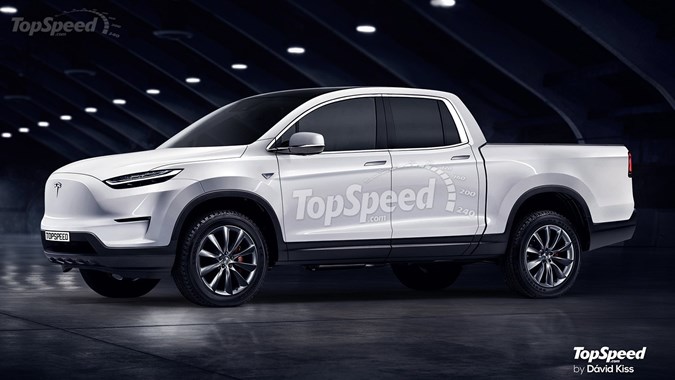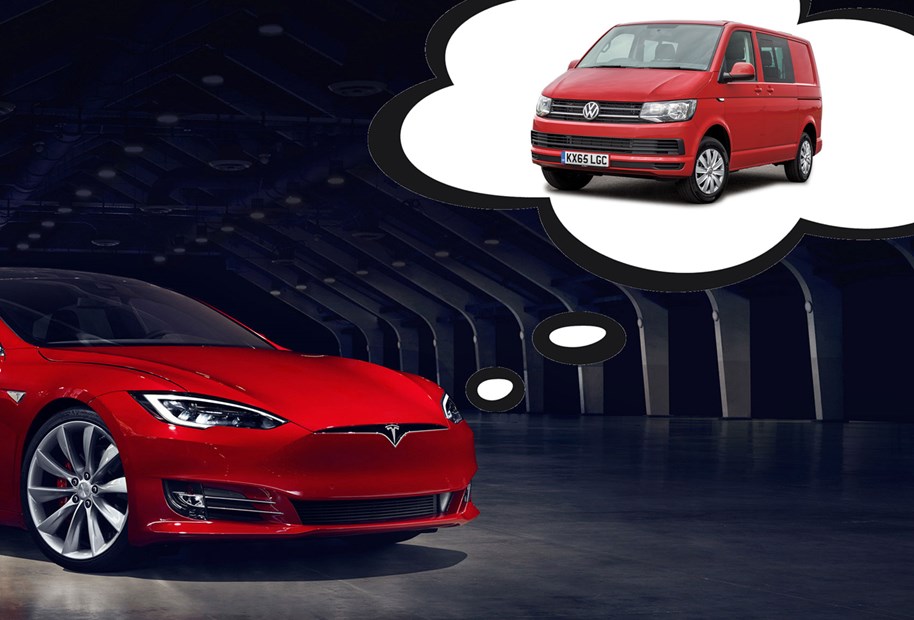Electric car maker Tesla has announced plans to take on the commercial vehicle sector – starting with “a new kind of pickup truck”. Company founder Elon Musk confirmed the pickup as part of his unusually named Master Plan, Part Deux, which lays out the next steps for a company that has already initiated something of a revolution within the automotive industry.
As well as the new pickup truck, Musk’s Master Plan, Part Deux revealed that Tesla is already working on a minibus concept and a Tesla Semi – semi being the American term for an articulated lorry rather than a partially detached house or anything more erotic. Perhaps of greater significance to UK and European buyers, Musk later took to Twitter to discuss the idea of a Tesla van, based on the same platform as the pickup.
As with every Tesla vehicle, each of these new models would be powered by electric motors and batteries, with no conventional diesel or petrol engine options at all.
What can we expect from a Tesla pickup truck?
Beyond confirmation that it is an active part of the future product plan, there are no official details of the Tesla pickup at this stage. It’s also unclear whether in describing it as a “new kind” of pickup truck Musk is simply referring to the electric powertrain or something more radical in its design; going on previous Tesla form we’d be braced to expect the latter…
While pickups attract both business and lifestyle buyers, a working vehicle of this type presents quite the challenge to an electric car maker – especially when you consider how often pickups are used for towing (particularly in Tesla’s native USA market). Tesla has repeatedly proven its electric motors can deliver plenty of performance in the car world, but adding the weight of a working load and a trailer is likely to have a big impact on how far the pickup can travel between charges.

Tesla may be able to compensate for this by increasing the amount of batteries on board, but doing this will certainly increase the cost. And besides, the greater the battery capacity the longer it will take to recharge. Even using one of Tesla’s own Superchargers – the most powerful charging system in operation at the moment – it currently takes around 40 minutes to get an 80 percent charge on one of Tesla’s cars, such as the Model S.
On the plus side, the lack of conventional engine and gearbox components in electric vehicles means Tesla could build a particularly practical pickup, with greater storage and load capacity than that available from ordinary rivals. Additionally, EVs are not only environmentally cleaner than regular vehicles in operation, they are also considerably more refined, with literally none of the vibration or noise associated with diesels.
As you can see from the above image provided by TopSpeed, plenty of places online are already speculating about what the Tesla pickup might look like, but as yet we don’t even know what it might be called. Perhaps it would simply be the Tesla Truck, or maybe the Tesla Model U.
How likely is a Tesla van?
Speculation about a Tesla van stems from a query to Elon Musk on Twitter from British engineer James Ross, asking: “Why no Ford Transit van killer?” Musk responded by tweeting “probably makes sense to build off the pickup truck chassis”.
Clearly, this isn’t confirmation that the company will build a van, but the same advantages and disadvantages apply – and again, we would expect any Tesla electric van design to be considerably more radical than existing examples from the likes of Citroen, Nissan, Mercedes and Renault, who all build electric variants of conventional vans.
Why should we be excited about a Tesla van?
Tesla’s forward thinking goes well beyond replacing petrol and diesel with electric motors. For example, the Master Plan, Part Deux talks about incorporating solar panels into the roof panels of future Tesla vehicles in order to keep the batteries topped up – and there would certainly be plenty of space for solar panels on the top of a van.
Tesla is also at the cutting edge of autonomous driving technology using its Autopilot system. This has already completed around 200 million miles of real-world driving, and though this a still a long way from the point at which your van might be able to head off and collect supplies from the trade counter by itself, Musk has big ambitions in this area.
According to the Master Plan, Part Deux: “When true self-driving is approved by regulators it will mean that you will be able to summon your Tesla from pretty much anywhere. Once it picks you up, you will be able to sleep, read or do anything else enroute to your destination.”
Just imagine the day when that early morning start to get to the job on time will safely allow you to catch another 40 winks during rush hour traffic.
To find out more about Tesla take a look on the Parkers’ car site here
Just so you know, we may receive a commission or other compensation from the links on this website - read why you should trust us.




